Kalanchoe blossomfeld grows in low bushes with small rounded or oval leaves, blooms very beautifully at any time of the year. This plant is not only beautiful, but also medicinal - the juice of its leaves is used as a medicine for colds, burns and many other ailments. It has anti-inflammatory, wound healing and antimicrobial effects.
Material Content:
Basic requirements for the cultivation of Kalanchoe blossomfeld, plant species
This is an unpretentious plant from the family Crassulaceae. In total, more than 200 varieties of Kalanchoe are known, which are conditionally divided into three groups - decorative-deciduous, flowering and viviparous. Kalanchoe blossomfeld belongs to the popular flowering species.

Many varieties with different colors and shapes of flowers have been bred:
- "Yellow" - with yellow flowers;
- "Singapore", "Red Star", "Scotty Don Juan" - with red flowers;
- "Leonardo" - with terry flowers;
- “Casablanca” - with white flowers;
- "Kalandiva" - with pink terry flowers.
Growing Kalanchoe of various species is similar. Favorably affects their growth and development of the abundance of light. The optimum indoor temperature is + 20 ° C, in winter it should not fall below +10 ° C.
He does not like Kalanchoe overmoistening of the soil and stagnation of water in the pan. Between watering the earth in the pot should completely dry. For flowering, the plant needs a special light regime and regular feeding.
Home Care
Kalanchoe blossomfeld is bought and grown for beautiful flowering. With proper care, it can bloom at any time of the year.
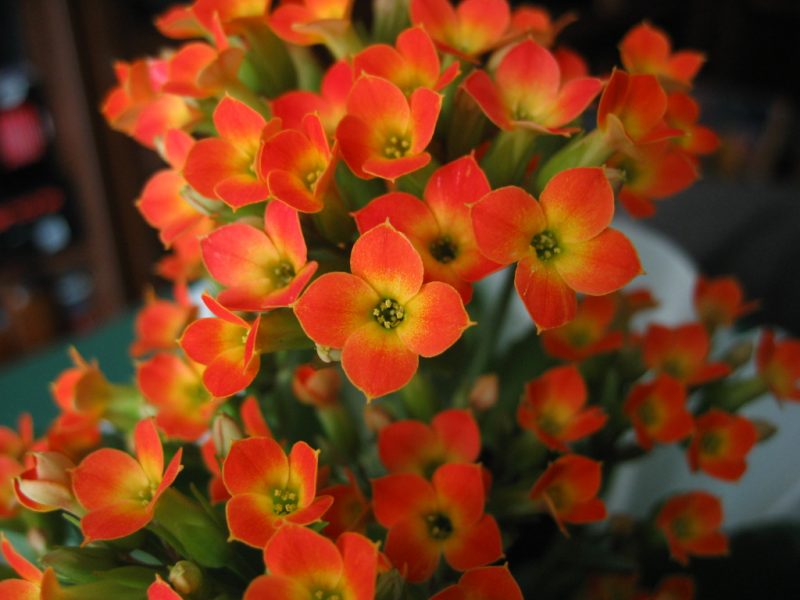
The plant is easily propagated by cuttings and, incidentally, grown on the window sill of the cuttings, it is more hardy than bought in a store. Pinch the young plant to form a lush bush.
After flowering, Kalanchoe is cut and reduced watering - it needs a dormant period. The flower well tolerates a lack of moisture, and with excessive watering, its roots can rot.
Ground and pot requirements
The plant loves the soil light and permeable. A ready-made soil mixture for succulents, which is sold in flower shops, is suitable. You can independently prepare a substrate of sand, turf and leaf soil, taken in equal quantities.
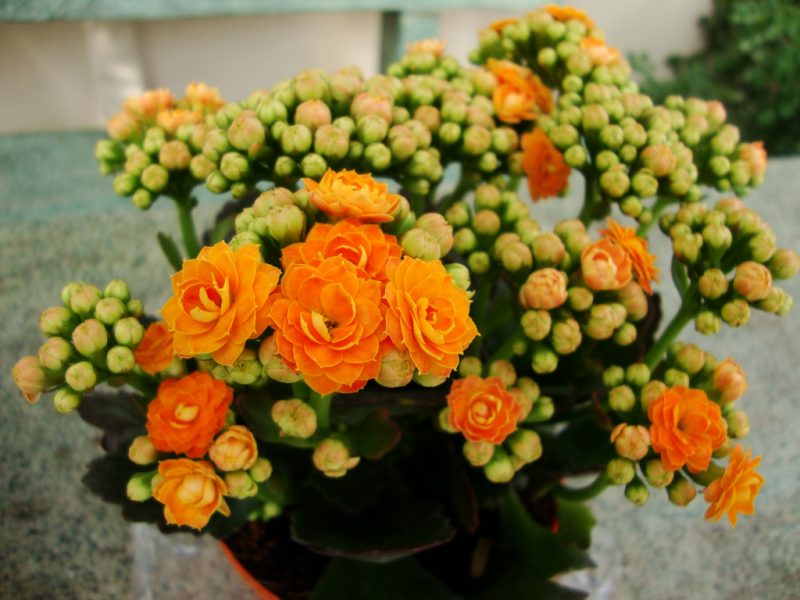
The pot for growing can be plastic, made of fireclay, clay or wood.
- For the roots to "breathe", it is best to choose a container from fireclay.
- At the bottom, drainage is mandatory to drain excess water.
- The volume of the pot should match the size of the root system. Too much will lead to stagnation of moisture, slowing down the development of the plant or its death.
Watering, fertilizing and fertilizing
Kalanchoe is watered as the top layer of the earth dries in a pot. A slight underfilling is better than waterlogging. Thick fleshy leaves accumulate moisture and well tolerate its lack of soil. In the summer, Kalanchoe is watered 1-2 times a week, less often in winter. The requirements for irrigation water are the same as for other indoor flowers. It should be at room temperature, settled, preferably, spring or passed through a filter.
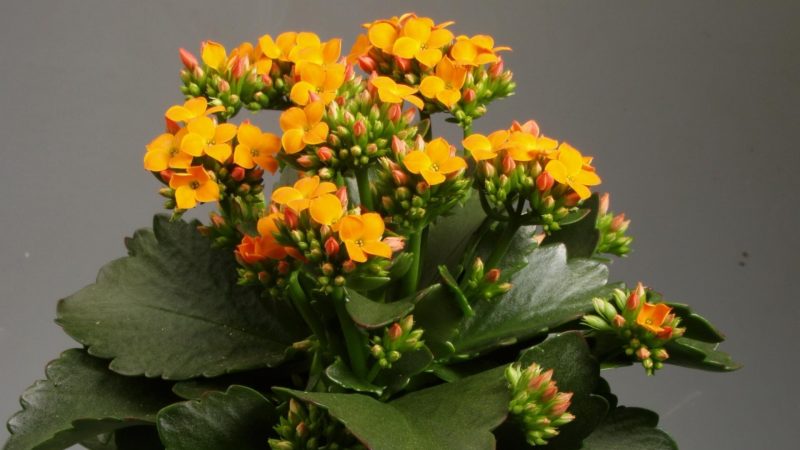
You can’t water the plant with boiled water, it will quickly die due to a shortage of necessary trace elements.
For good growth, the flower needs fertilizers. They are added to water for watering once every two weeks. Feeding suitable for succulents, which are sold in flower shops, is suitable. In the dormant period after flowering, Kalanchoe does not need fertilizers.
Location, lighting and humidity
The birthplace of Kalanchoe Blossfeld is sunny Madagascar. Because the plant loves the sun, but grows well in light shading. They put a flower pot on a light windowsill, next to the windows facing southeast. The southern windows are also suitable for growing, but at noon the plant needs to be protected from direct sunlight so that the leaves do not suffer from burns.
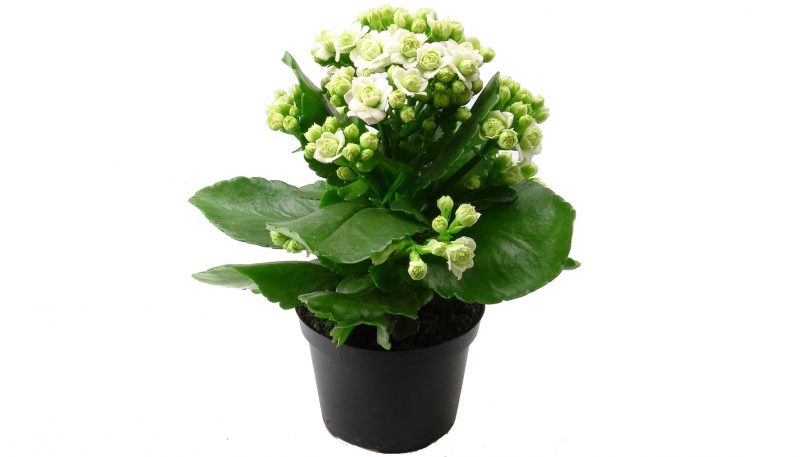
The flower does not need spraying. He does not need high humidity. If the leaves are dusty, they simply wipe them with a damp soft sponge or cotton wool.
Flowering and pruning Kalanchoe
In order for bright flowers to blossom between dark green, glossy leaves, special conditions must be observed. Kalanchoe is a short-day plant, it needs lighting for 8-10 hours a day. To stimulate flowering during the day, it is covered with a box, a bucket or an opaque bag, and it spends the rest of the day in the dark. This mode will have to be followed 4 weeks before flowers appear. If the plant is not covered, it can bloom on its own from February to May.
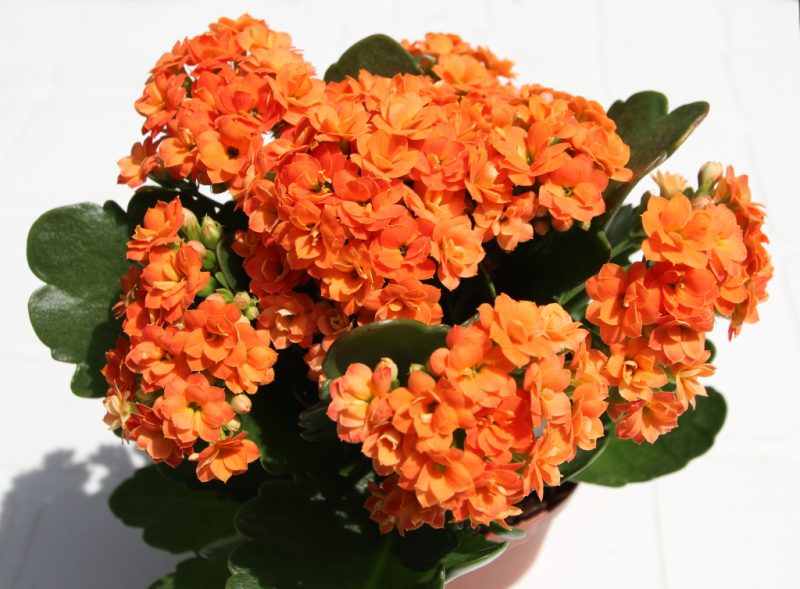
When the Kalanchoe fades, dried inflorescences are cut off and put the pot in a shaded place. The plant has a resting period of 1 month.
During this period, it is not fertilized or watered. A month later, they again put it on the sunny windowsill, where the flower forms new lush shoots. The plant is fertilized once every two weeks so that the leaves are not depleted.
Transplant at home
An adult plant is transplanted once every 2-3 years as the root system grows and the soil is depleted. It is advisable to transplant the Kalanchoe bought in the store when it finishes blooming.

Transplant procedure:
- dried flower stalks cut;
- pick up a flower pot a little larger in size than the one in which the flower grows;
- drainage is placed at the bottom of the pot;
- pour soil for succulents;
- replanting a plant;
- the soil is slightly moistened.
Young plants are preferably replanted annually. If there is a plot of land with a garden and a flower garden, can be planted in May Kalanchoe Blossfeld in the open ground in the area shaded from the bright sun. The plant will grow stronger, will grow many leaves, and in August, it needs to be dug up and moved to the room so that it does not die in winter.
Features of propagation of Kalanchoe blossomfeld
The plant propagates by seeds and stem or leafy cuttings. Rooting cuttings is best done in the warm season. Seeds are sown in the spring in a container with a light substrate. Cover it with glass and put in a warm, bright place. When sprouts appear, the glass is removed.
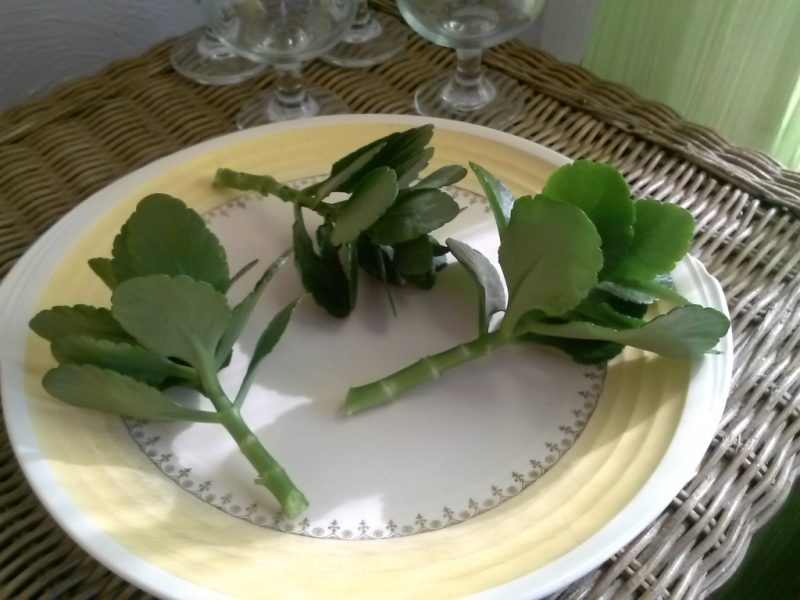
Cuttings for propagation are cut with two or three pairs of leaves, and the lower ones are cut off so that they do not interfere. Kalanchoe grows roots in the water, but it is better to root it in the substrate. Freshly cut cuttings are dried for several hours in the air or cut off with wood ash from a burned match. The substrate for rooting is chosen the same as for planting - light and nutritious, for succulents. You can mix it with sand or vermiculite.
- For rooting take small plastic containers with holes in the bottom.
- At the very bottom, drainage is poured, filled with soil, and cuttings are planted.
- The earth is slightly moistened with a spray gun, Kalanchoe is placed in a bright, warm place.
- In the first week, you can cover the seedlings with a transparent plastic bag for better rooting.
Pests, diseases and treatments
Improper care for Kalanchoe can lead to diseases. The plant suffers from excessive moisture in the soil, lack of lighting, temperature changes in the room or drafts.
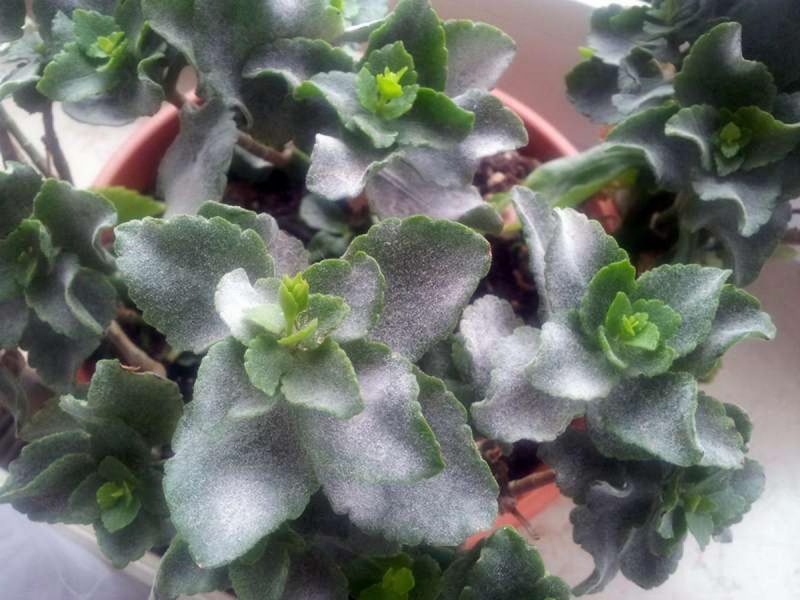
A weakened bush is more often affected by harmful insects, which spoil its appearance and even lead to death if the fight is not started in time.
On the leaves and stems of Kalanchoe, you can find such pests:
- mealybugs;
- scale shield;
- ticks;
- aphids.
To combat spider mites, the drug “Akarin” or “Vertimek” is used. Against other insects, pests treat leaves and stems with insecticides: Fitoverm, Actellik, Intavir, Aktara.
With most rot, the plant is difficult to save. Powdery mildew - characteristic white spots on the leaves - are treated by spraying with fungicides. With late blight, brown spots or brown plaque are visible on Kalanchoe. The diseased plant is sprayed with fungicide, transplanted into fresh soil and reduce watering.
In general, following the simple rules of care, you can enjoy the blooming bright flowers of Kalanchoe on the windowsill every year.












